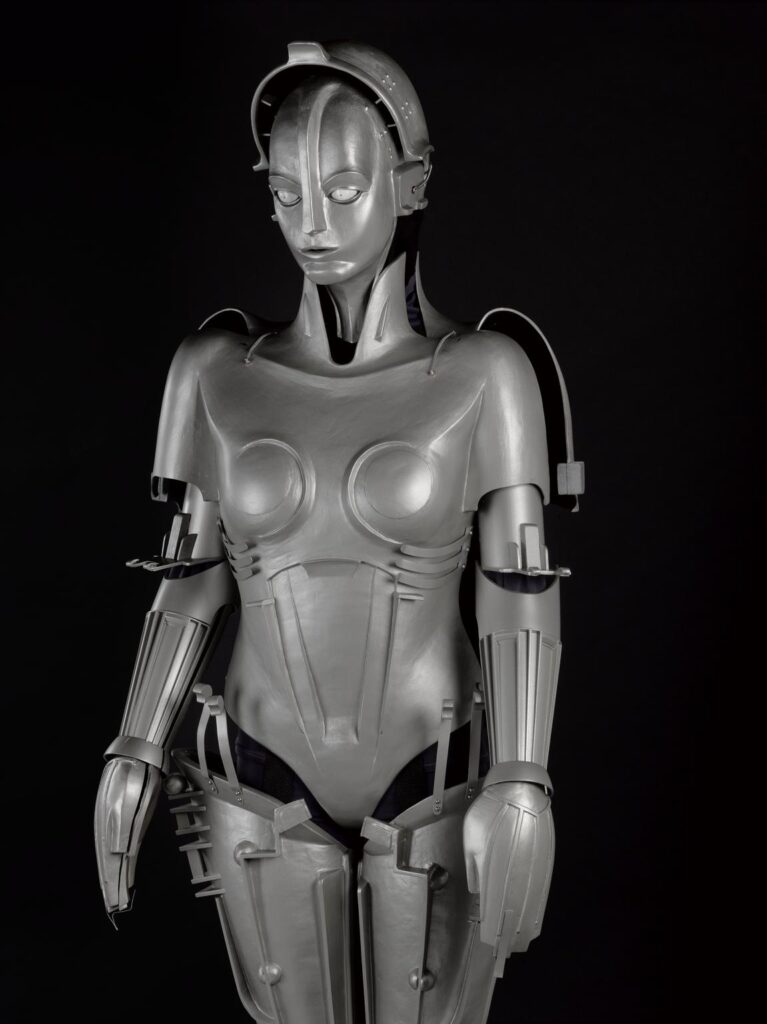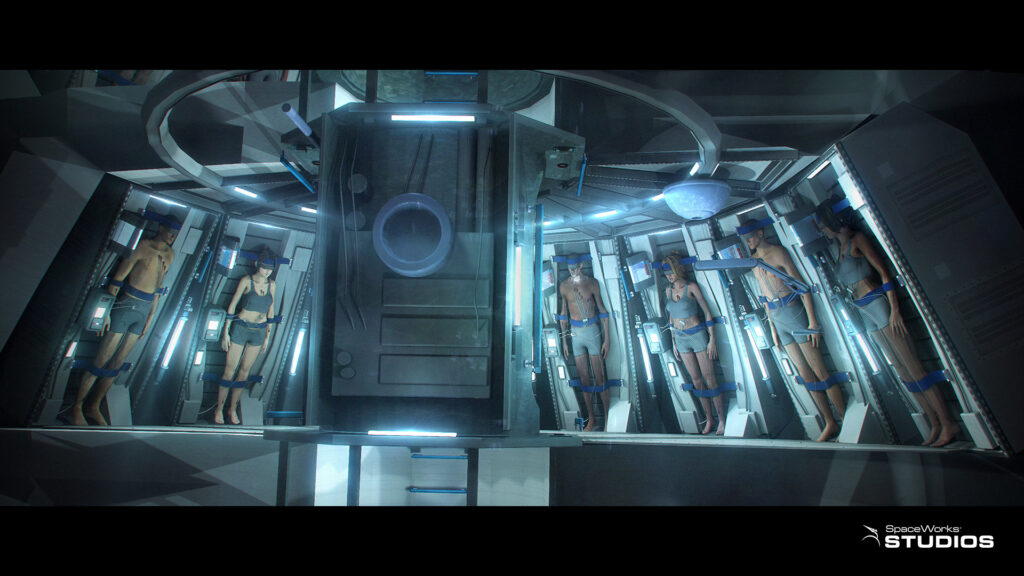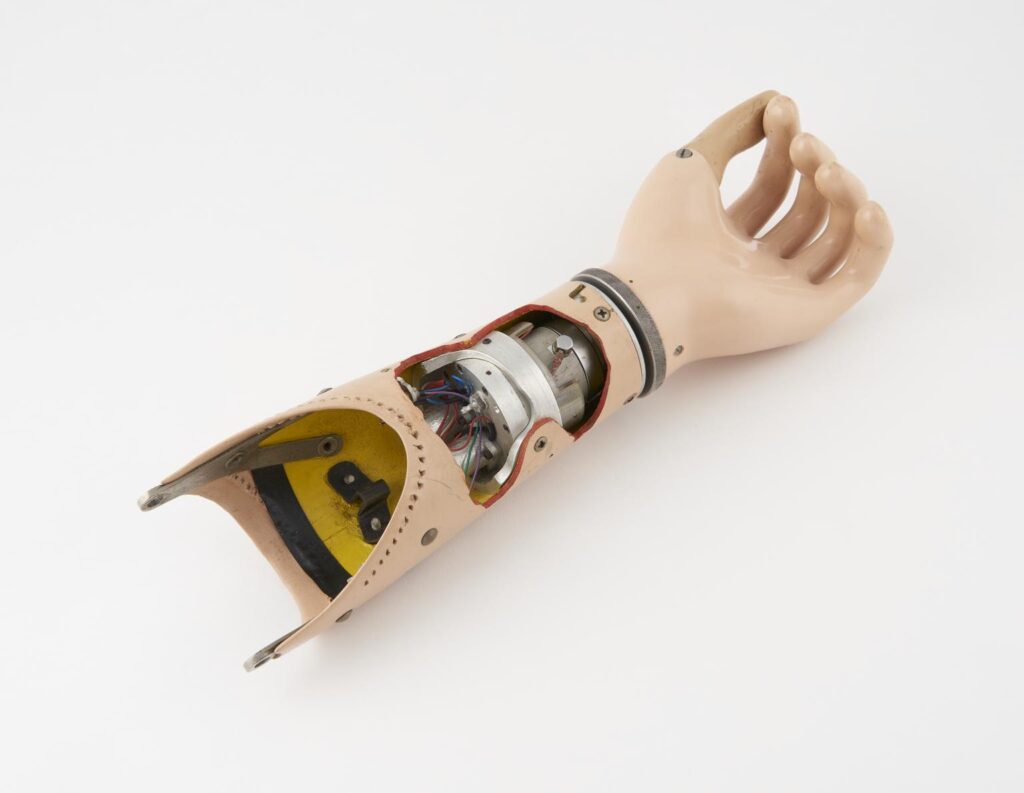Star Wars is a science fiction franchise like no other, dominating the cultural landscape in cinemas, streaming, video games, theme parks and beyond. Unlike some science fiction, Star Wars is not a universe which prioritises starting from a scientific premise, it’s a spacefaring adventure series full of heroic archetypes. It is, ungenerously perhaps, sometimes referred to as “wizards in space”. But actually, like all science fiction, Star Wars is full of interesting ideas which speak to scientific and technological issues here on Earth.
Our Science Director, Roger Highfield, has already written a post about the science behind lightsabers which I highly recommend. But that’s not where the story ends, let’s take a look at the galaxy far, far away and a few more of the science stories it can tell.
HYPERDRIVE
Getting from point A to B is a plot problem which many spaced-based science fictions have to grapple with. Star Trek has its warp drive, Star Wars has the hyperdrive. There is never a moment in Star Wars where the hyperdrive is explained in particular detail but the crucial detail is the term “hyperspace”. A warp drive bends spacetime in this dimension, allowing us to reach a destination faster than the speed of light, whereas the hyperdrive allows a ship to jump into a higher dimension of space where the rules of physics are different.
This is a similar principle to the science of wormholes, such as those in Stargate or Interstellar. The hyperspace of Star Wars is the dimension the ship travels through when it bends spacetime to punch a hole between two points. Manipulating the fabric of spacetime in this way would require vast amounts of energy, certainly there’s nothing on Earth that could achieve this feat. In the Star Wars universe there seem to be a few different fuels which have this high energy potential, in Solo: A Star Wars Story (2018) we see a young Han Solo participate in a heist to steal a shipment of coaxium, for example.
Even with the right amount of energy, plotting a course and controlling your flight to reach the correct destination safely would still be incredibly difficult, if it’s possible at all, but then as Han himself tells us, ‘Traveling through hyperspace isn’t like dusting crops … Without precise calculations we could fly right through a star, or bounce too close to a supernova, and that’d end your trip real quick, wouldn’t it?’
DROIDS

The droids of Star Wars exist in the proud lineage of science fiction robots from Maria in Metropolis (1927) and Robby in Forbidden Planet (1956). There are two key factors to the science of droids, one is the robotic body, the other is the cybernetic mind. When it comes to the body, it feels like out scientific achievements are not greatly removed from what we see on screen.
Robotics companies such as Boston Dynamics have created numerous videos of their robots performing human-like feats such as the Atlas robot doing parkour with far more agility than I could manage, let alone the stiff-bodies C3PO.
Working models of R2D2 and BB8 already exist created by groups such as the R2D2 Builders Club. But these robots, like those from Boston Dynamics, are either remote controlled or very carefully programmed, they are not intelligent. You certainly couldn’t have a conversation with one, that would require human-like artificial intelligence: a general intelligence.
Current AI is specialised or ‘narrow intelligence’ it can exceed human ability at very specific tasks such as playing a game of chess, but the same AI cannot play chess, paint a picture, have a conversation, and fry an egg, a human could do all of those things and more in a day.
CARBONITE FREEZING

In The Empire Strikes Back (1980) Han Solo is frozen in carbonite and taken by bounty hunter Bobba Fett to Jabba’s Palace. Whilst frozen and encased in carbonite Solo is perfectly safe, but he’s also frozen in time, unaware of events occurring around him and unable to do anything about them. When he’s unfrozen in Return of the Jedi (1983) a year has passed but for him it will have felt like only a few moments.
The similarity here is to studies being done into human hibernation, or torpor sleep, which may allow us to put ourselves into a sleep-like state for long periods of time. This could prove vital to any efforts for humanity to journey into space beyond the moon: a journey to Mars takes around eight months, for a crew to be able to hibernate for most of the journey there makes such a long period in the confines of a spaceship far more tolerable. It also means that the ship needs to carry less resources like food which would be consumed on the journey, and there’s even the suggestion that being in a torpor state might make us less vulnerable to the dangerous radiation that assaults space vessels once they leave the protective envelope of Earth’s magnetosphere.
Han Solo suffers from hibernation sickness and is temporarily blind when he is released from the carbonite. Whilst other mammals as small as mice and as large as bears are capable of hibernation, Professor of neuroscience Vladyslav Vyazovskiy points out that we still don’t know whether safe prolonged human hibernation is possible but that ‘recent technological advances and new pharmacological and genetic tools have already shown great potential to induce or manipulate sleep.’
CYBORGS

Replacing parts of your body with mechanical alternatives is so routine in the Star Wars galaxy (luckily for the Skywalker family) that no one even bothers to use the word cyborg, but that’s what we’d call it. The term cyborg was first coined by psychiatrist Nathan Kline and engineer Manfred Clines who wrote a scientific paper in 1960 proposing that humanity would need to adapt, becoming ‘cybernetic organisms’ (cyborgs for short) with technological implants and modifications to cope with the lethal challenges of surviving in space. It would be easier, they proposed, to change ourselves than it would be to adapt the hostile environment of space.
Although rooted in the scientific world, the term cyborg was quickly adopted by science fiction and we see cyborgs everywhere in the genre. Darth Vader, who Obi Wan Kenobi calls ‘more machine now than man’ is one of the most famous cyborgs of all time. Of course, Kenobi continues to describe Vader as ‘twisted and evil’ and this characterisation of cyborgs was common in the 1960s and 70s that we also see in characters like Doctor Who’s Cybermen: that if we replace too much of our biology with machinery then we will lose our humanity. It’s less common now thanks to cyborg heroes from The Six Million Dollar Man and Bionic Woman to DC Comics Cyborg, but it’s also thanks to the adoption of the term cyborg and bionic as positive labels by some users of prosthetics such as Tilly Lockey who we interview in the Science Fiction exhibition.
Replacement limbs in the Star Wars universe are capable of conveying sensory information like touch, as we see when Luke is fitted for his new arm at the end of Empire Strikes Back. We can’t do that yet but advances in brain-computer-interface and neuromusculoskeletal technology could mean that this is one piece of science fiction which becomes fact sooner than you think.
The Star Wars galaxy is vast and full of wonders, and there are certainly more science stories to be told, but this gives you a taste of the ways science and science fiction interact in the franchise and the kinds of science stories good science fiction can speak to.
Science Fiction: Voyage to the Edge of Imagination is open at the Science Museum until 20 August 2023. Book your tickets now
